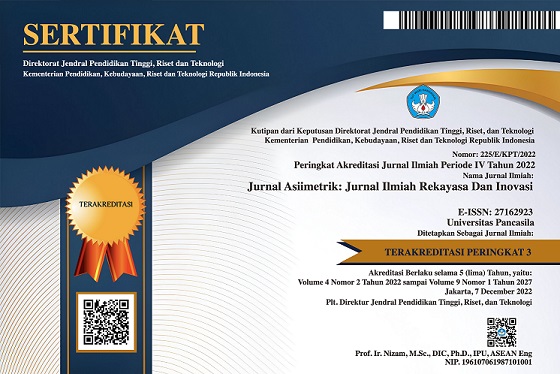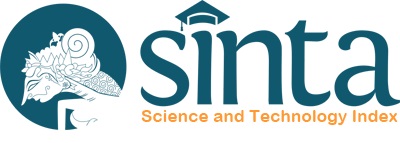Analisis Peningkatan Efektivitas pada Perusahan Kargo dengan Metode Six Sigma DMAIC dan FMEA
Abstract views: 750 | pdf downloads: 935
Abstract
The PT. XYZ is engaged in freight forwarding which has its own aircraft fleet, this company still has problems with uncoordinated shipments resulting in the goods not being sent according to the specified time. In 2017, PT. XYZ received many complaints from customers using these services so that the company had to pay losses due to late delivery that occurred. Some customers even choose to use cargo shipping services from other companies. Six Sigma is a process improvement strategy, for example to eliminate waste, reduce costs and improve the effectiveness of all operational activities so that they can meet customer needs and expectations. The purpose of this research is that the goods produced can reach the predetermined quality standards, so that the cost of inspection can be as possible. The results of the study show that the factor that often affects is human factors.
References
Andika, D. (2019) ‘Analisa Penurunan Reject “Produk Bead Forming” Di Departemen Material Pt. Gtd Menggunakan Metode Dmaic (Define, Measure, Analyze, Improve, Control)’. Http://Unugha. Ac. Id.
Evans, J. R. (2002) ‘Total Quality Management’, Infor. Canadian Operational Research Society, 40(4), P. 364.
Gaspersz, V. (2007) Lean Six Sigma. Gramedia Pustaka Utama.
Ghiffari, I., Harsono, A. And Bakar, A. (2013) ‘Analisis Six Sigma Untuk Mengurangi Jumlah Cacat Di Stasiun Kerja Sablon (Studi Kasus: Cv. Miracle)’, Reka Integra, 1(1).
Hermanto, H. And Wiratmani, E. (2019) ‘Analisis Reject Gagal Curing Valve Terjepit Pada Produk Ban Luar Pt Suryaraya Rubberindo Industries Dengan Metode Six Sigma Dan Fmea’, Ikra-Ith Teknologi: Jurnal Sains & Teknologi, 3(1), Pp. 15–25.
Julyanthry, J. Et Al. (2020) Manajemen Produksi Dan Operasi. Yayasan Kita Menulis.
Marzagão, D. S. L. And Carvalho, M. M. (2016) ‘Critical Success Factors For Six Sigma Projects’, International Journal Of Project Management. Elsevier, 34(8), Pp. 1505–1518.
Montgomery, D. C. (2007) Introduction To Statistical Quality Control. John Wiley & Sons.
Moosa, K. And Sajid, A. (2010) ‘Critical Analysis Of Six Sigma Implementation’, Total Quality Management. Taylor & Francis, 21(7), Pp. 745–759.
Sreedharan V, R. Et Al. (2018) ‘Assessment Of Critical Failure Factors (Cffs) Of Lean Six Sigma In Real Life Scenario: Evidence From Manufacturing And Service Industries’, Benchmarking: An International Journal. Emerald Group Publishing Limited, 25(8), Pp. 3320–3336.
Stamatis, D. H. (2003) Failure Mode And Effect Analysis: Fmea From Theory To Execution. Quality Press.
Sucipto, S., Sulistyowati, D. P. And Anggarini, S. (2017) ‘Pengendalian Kualitas Pengalengan Jamur Dengan Metode Six Sigma Di Pt Y,
Pasuruan, Jawa Timur’, Industria: Jurnal Teknologi Dan Manajemen Agroindustri, 6(1), Pp. 1–7.
Syukron, A. And Kholil, M. (2013) Six Sigma: Quality For Business Improvement. Yogyakarta: Graha Ilmu.


























